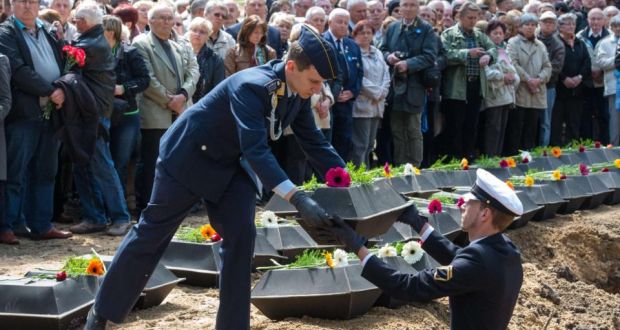Berlin: More than seven decades after the end of World War II, the remains of political prisoners executed by the Nazis and dissected for research will be given a proper burial in Berlin.
The microscopic remains – 300 tissue samples each a hundredth of a millimetre thin and around one by one centimetre large – were uncovered by the descendants of the late Hermann Stieve, an anatomist who worked on the bodies of Third Reich opponents.
“Such small tissue samples are usually not deemed worthy of burial,” Andreas Winkelmann, who had been tasked to determine the origin of the histological samples, told this agency.
“But this is a special story, because they came from people who were actively denied graves so that their relatives would not know where they are buried.”
A ceremony will be conducted Monday with descendants of the Nazi victims expected to attend, before the remains are finally laid to rest at the Dorotheenstadt cemetery in central Berlin.
The site had been picked as there are many graves and memorials for the victims of Nazism there, said Johannes Tuchel, director of the German Resistance Memorial Centre, which is organising the special event along with Berlin’s University Hospital Charite.
Tuchel said a decision was made to bury the specimens as they are ‘the last remains of people who were victims of the Nazi unjust justice system’. “They were denied a grave at that time, and so today, a burial is a matter of course,” Tuchel stated. A plaque will also be put up to explain the find.
More than 2,800 people held at the Berlin-Ploetzensee prison were put to the guillotine or hanged between 1933 and 1945, and most were then sent for dissection at the Berlin Institute of Anatomy.
Winkelmann, who had done extensive research into Stieve and his controversial experiments, said it was unclear how many individuals’ remains were included in the batch of specimens. Some 20 specimens came with names, others only numbers.
The clues have however helped draw a firm link with the ‘Ploetzensee’ victims. Among those executed at Ploetzensee were 42 resistance fighters from the Berlin group Red Orchestra. Stieve is believed to have dissected at least 13 of 18 female Red Orchestra fighters executed.
Stieve was the director from 1935 to 1952 of the Berlin Institute of Anatomy, where he carried out his controversial research on the female reproductive system. Some of his scientific insights derived from histological probes on the genital organs of executed women.
